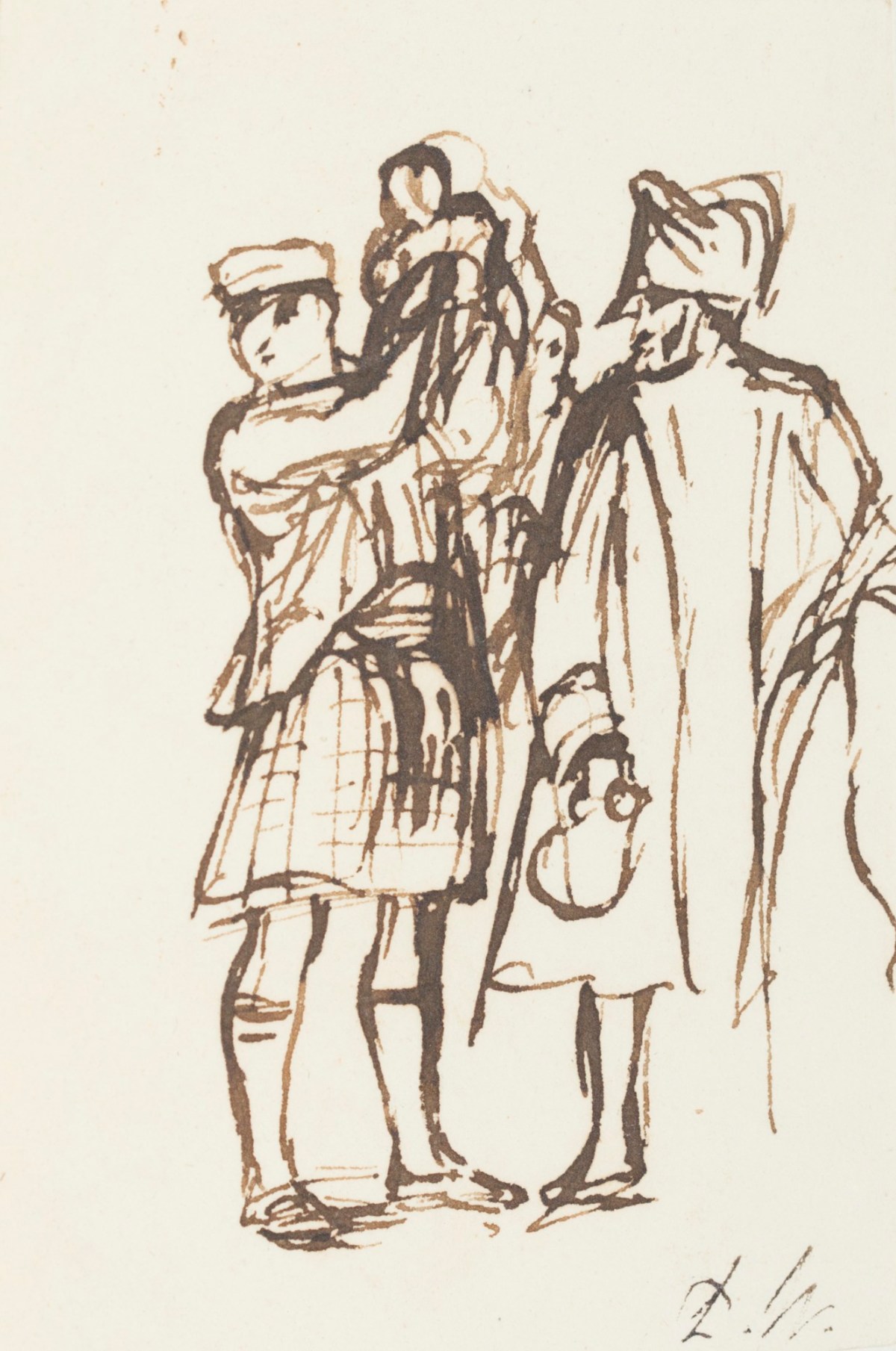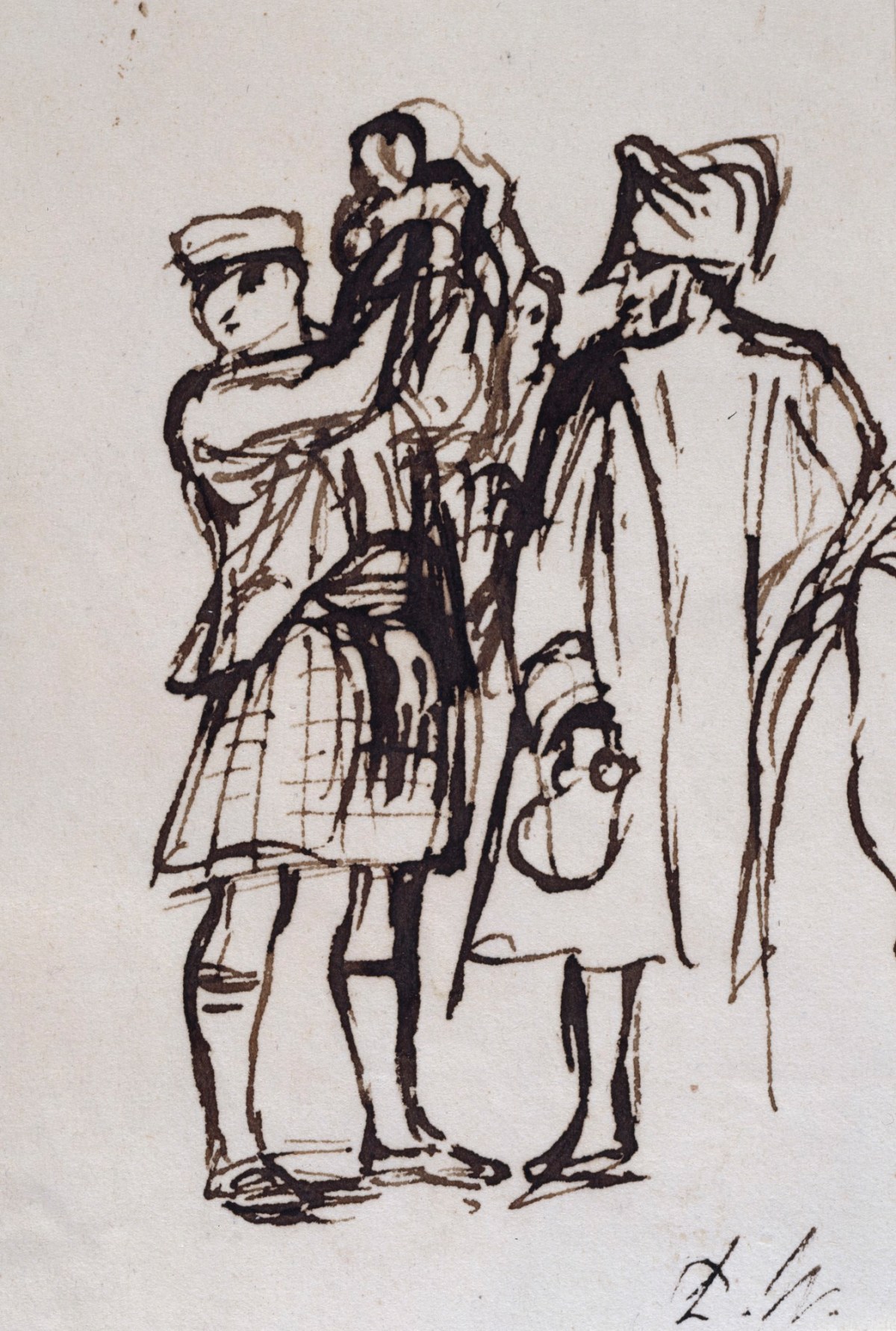
Sir David Wilkie RA, Two men and a child - possibly a study for 'Chelsea Pensioners Reading the Gazette of the Battle of Waterloo, ca. 1818-22.
Pen and ink on cream wove paper. 110 mm x 68 mm. © Photo: Royal Academy of Arts, London.
This image is released under Creative Commons CC-BY-NC-ND
To licence this image for commercial purposes, contact our Picture Library at picturelibrary@royalacademy.org.uk

Sir David Wilkie RA, Two men and a child - possibly a study for 'Chelsea Pensioners Reading the Gazette of the Battle of Waterloo, ca. 1818-22.
Pen and ink on cream wove paper. 110 mm x 68 mm. © Photo: Royal Academy of Arts, London. Photographer: John Hammond.
This image is not available to download. To licence this image for commercial purposes, contact our Picture Library at picturelibrary@royalacademy.org.uk
Two men and a child - possibly a study for 'Chelsea Pensioners Reading the Gazette of the Battle of Waterloo, ca. 1818-22
Sir David Wilkie RA (1785 - 1841)
RA Collection: Art
These drawings by Sir David Wilkie are all mounted in an album of studies probably put together by the artist's brother. According to the artist and Royal Academy librarian Solomon Hart 'they are a portion of a series of sketches of pictures, which he [Wilkie] from time to time sent to a brother, an officer in the Indian Army. He, it seems, used to give them to his brother-officers' children, who bedaubed them with common watercolours. Such as escaped I had the good fortune to acquire for the Academy, from a sister of some of these juvenile artists' (Alexander Brodie ed., The Reminiscences of Solomon Alexander Hart R.A., London, 1882, p.66)
Included in the album are sketches relating to some of Wilkie's best-known works including 'The Penny Wedding' (1818; Royal collection), 'The Breakfast' (1817; Private collection) and 'Chelsea Pensioners Reading the Gazette of the Battle of Waterloo' (1818-22, Apsley House).
This sketch relates to Wilkie's painting 'Chelsea Pensioners Reading the Gazette of the Battle of Waterloo' (1818-22, Apsley House). The painting was commissioned, in person, by the Duke of Wellington in 1816. He was closely involved with its progress, choosing what he liked and disliked from sketches prepared by the artist. Wellington initially requested 'a parcel of old soldiers assembled together...talking over their old stories' but later decided that there should also be 'more soldiers of the present day'. Following consultations with the Duke, Wilkie changed the left side of the composition to focus on the man reading the gazette aloud to an attentive crowd. The result was so popular when exhibited at the Royal Academy in 1822, that Wilkie requested a barrier to protect his painting from the throng of visitors.
Wilkie's biographer, Allan Cunningham, cited a passage from the artist's diary describing his visit to Apsley House to discuss compositional drawings for the 'Chelsea Pensioners':
'Called at Apsley House...He [the Duke] showed Mr Long the two sketches of the Chelsea Pensioners, stating what he liked and disliked, and observing that out of the two a picture might be made that would do. He preferred the one with young figures; but as Mr. Long remonstrated against the old fellows being taken out, the Duke agreed that the man reading should be a pensioner, besides some others in the picture. He wished that the piper may be put in, also the old man with the wooden leg; but he objected to the man with opthalmia...'
Object details
110 mm x 68 mm
Start exploring the RA Collection
- Explore art works, paint-smeared palettes, scribbled letters and more...
- Artists and architects have run the RA for 250 years.
Our Collection is a record of them.



